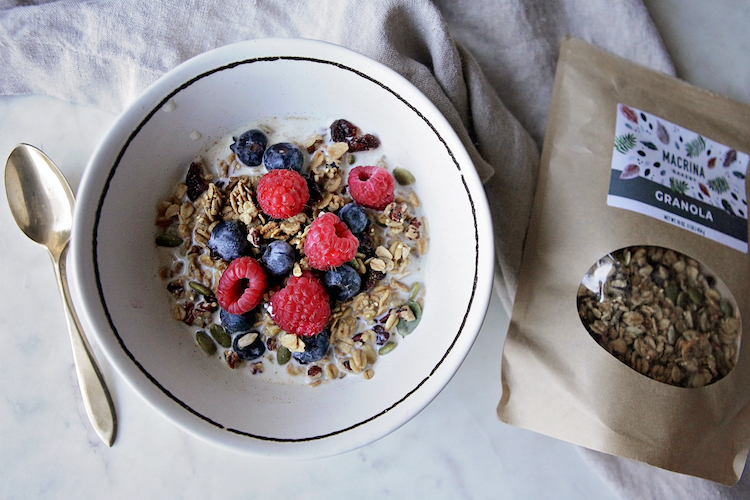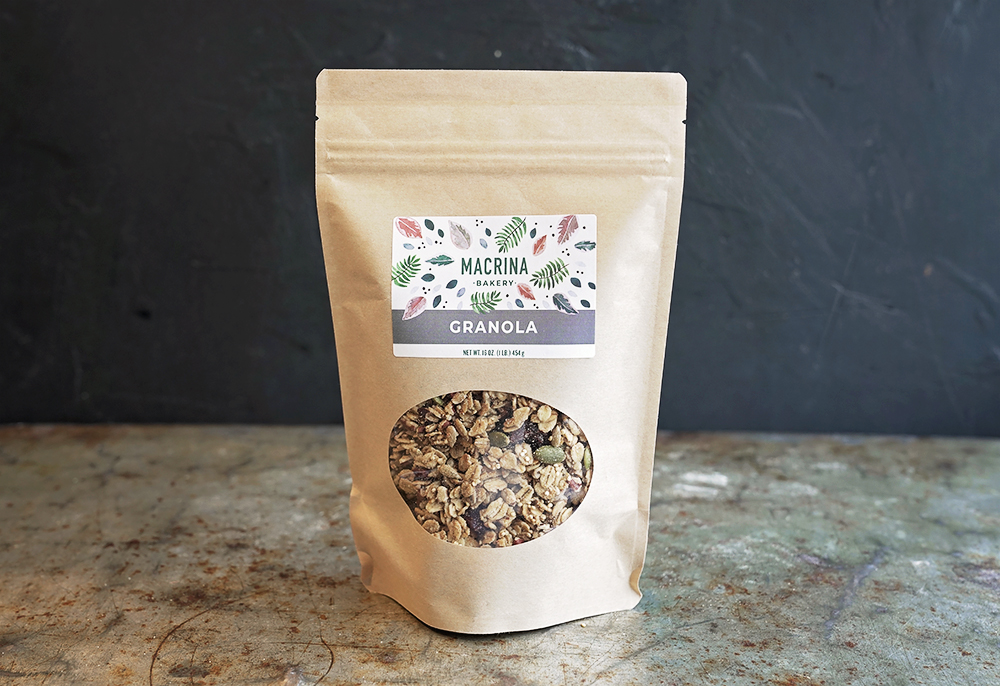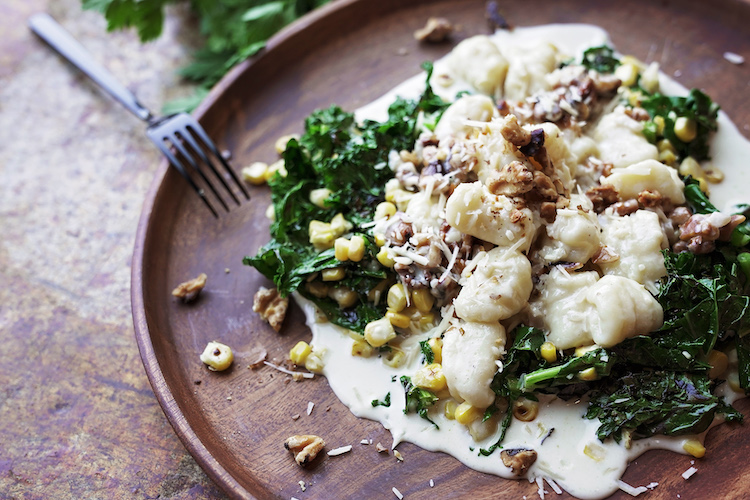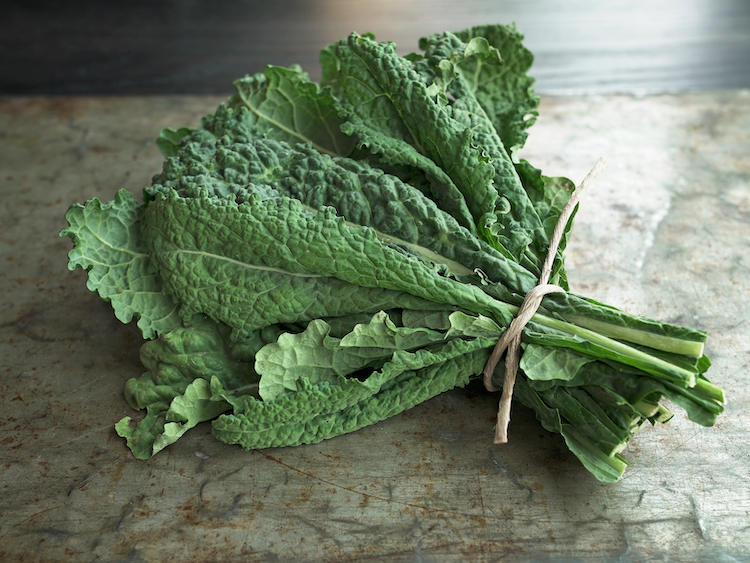Our Flaky Pie Dough is the most frequently prepared recipe in our pastry department—and has been since the day we opened our doors in Belltown in 1993! The dough is perfect for so many kinds of baking, from savory quiche to double-crusted pies to classic tarts. Now, for the first time, we are selling our Flaky Pie Dough in our cafés. The dough is frozen in discs and sold in a two-pack. Each 12 oz. disc rolls out to make a ten-inch tart or a nine-inch pie shell. Or you can use the two discs together to create a double-crusted pie.
Now, for the first time, we are selling our Flaky Pie Dough in our cafés. The dough is frozen in discs and sold in a two-pack. Each 12 oz. disc rolls out to make a ten-inch tart or a nine-inch pie shell. Or you can use the two discs together to create a double-crusted pie.
Your imagination is the limit for what you can make with our Flaky Pie Dough. To get you started, we’ve included three inspiring suggestions and one of our favorite new recipes with an accompanying video of Leslie showing you how to make it.
 Stop by one of our cafés and grab a few of these. When inspiration strikes, you’ll appreciate the time-saving benefits of having these at the ready.
Stop by one of our cafés and grab a few of these. When inspiration strikes, you’ll appreciate the time-saving benefits of having these at the ready.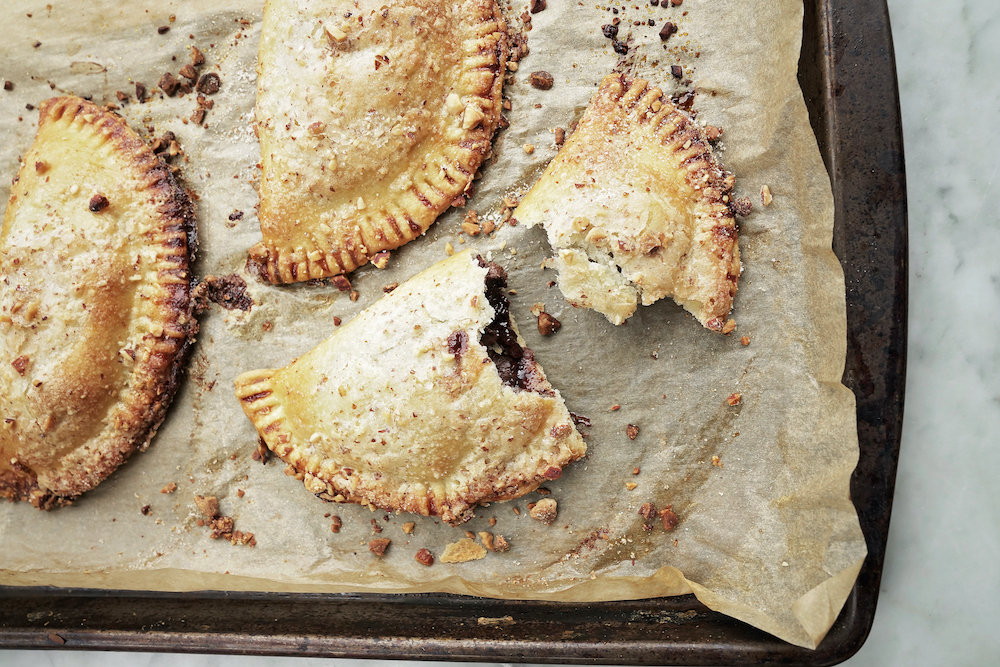 Banana Nutella Hand Pies: With our pie dough, simple hand-pies are as easy to make as the filling inside. Start with the mouthwatering combination of bananas and Nutella (what could be easier?) and work your way up through your favorite sweet and savory combinations. Simply roll the dough out and cut 5-inch circles. Add your filling, fold the dough over, and crimp the edges. Bake at 400°F for 20–25 minutes until the crust is golden brown.
Banana Nutella Hand Pies: With our pie dough, simple hand-pies are as easy to make as the filling inside. Start with the mouthwatering combination of bananas and Nutella (what could be easier?) and work your way up through your favorite sweet and savory combinations. Simply roll the dough out and cut 5-inch circles. Add your filling, fold the dough over, and crimp the edges. Bake at 400°F for 20–25 minutes until the crust is golden brown.
Savory Galette with Butternut squash, Roasted Pear and Gorgonzola: Shortly after opening, Leslie introduced savory free-form folded tarts or galettes, and they quickly became customer favorites. This galette is a seasonal adaptation of the one on page 203 of our first cookbook. With the pie dough already made, it’s easy to turn out an elegant lunch. Or cut the galette into small slices and serve it as an appetizer. Harvest Pie: This winter pie is one Leslie serves at her home alongside pumpkin pie at Thanksgiving. It’s also one of our most requested recipes. Our Flaky Pie Crust forms the bottom crust and the top is an almond streusel. You’ll find the recipe in our first cookbook on page 249.
Harvest Pie: This winter pie is one Leslie serves at her home alongside pumpkin pie at Thanksgiving. It’s also one of our most requested recipes. Our Flaky Pie Crust forms the bottom crust and the top is an almond streusel. You’ll find the recipe in our first cookbook on page 249.
Macrina’s Holiday Tart: With our frozen pie dough, this festive tart is a breeze to make. It’s both beautiful to look at and makes a refreshingly delicious end to a holiday meal. The tart cranberries find balance in the sweet filling and pecans add texture and flavor. Orange zest and a dash of brandy give it some zing. Find the video tutorial below!
Ingredients:
Makes one 10” tart
One 12 oz. disc of Macrina Pie Dough
1 cup chopped pecans, roasted
3 eggs
⅔ cups light brown sugar
⅔ cups corn syrup
4 Tbsp unsalted butter, melted and cooled to room temperature
2 tsp orange zest
½ tsp salt
1 Tbsp brandy
1½ cups fresh cranberries
1 Tbsp powdered sugar
Directions:
Thaw 1 disc of Macrina pie dough for 2 to 3 hours at room temperature. On a floured work surface, roll dough into a 14-inch circle that’s about an eighth-inch thick.
Fold dough in half and lift on to a 10-inch fluted tart pan. Drop dough into pan and flatten at base of pan and edges. With the remaining overhang, fold into the pan to create an edge that stands a half-inch above the top of the pan. With your hand, smooth the crust edge to a consistent thickness. Chill for 30 minutes in freezer.
Preheat oven to 375°F.
Line the tart shell with parchment paper and fill it with baking weights or beans. Bake for 25 to 30 minutes, until the edges are golden brown and the base appears dry. Remove the beans and let the shell cool.
Reduce oven temperature to 325°F.
Place the baked shell on a rimmed baking sheet. Add the pecans and cranberries to the tart shell and spread them so they’re evenly distributed.
In a medium bowl, whisk the eggs, brown sugar, corn syrup, melted butter, orange zest, salt and brandy together until well combined. Pour the mixture over the pecans and cranberries. Place the tart in the oven and bake for 35 to 40 minutes. When done, the center of the tart will be set and golden brown.
Let cool for 30 minutes. Serve with sweetened whipped cream.


